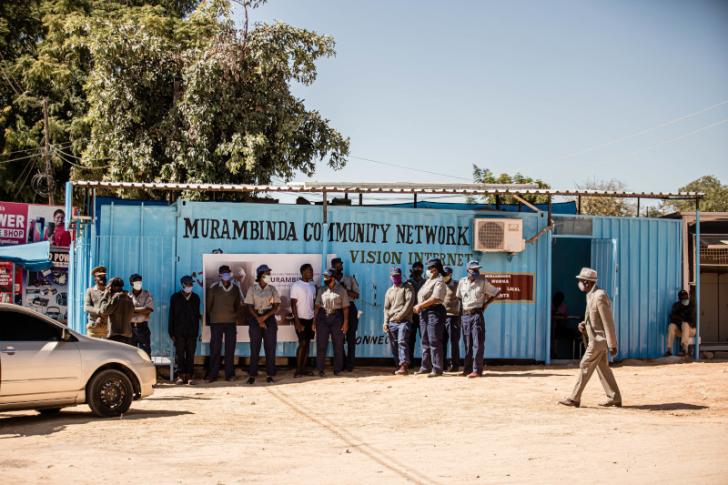
What does it take for communities to make change happen? We can find a living example in Zimbabwe, or more precisely in Murambinda – a “growth point” area established in the early 1980s in the Buhera district. (Growth points are centres subsidised by the government for urban development in predominantly rural settings.) Murambinda was home to the launch of the first community network in Zimbabwe in May 2021. Since then, some important achievements were made in terms of creating participatory processes and multistakeholder dialogue: the country has already had its first national conference on the topic and is discussing the creation of community network committees in provinces throughout Zimbabwe, hoping to multiply this kind of community-led approach to provide internet access.
This could lead to concrete support for many community networks to emerge and grow, bridging internet access gaps in a challenging scenario: of the 14.8 million people in Zimbabwe, 68% live in rural areas, where the internet access rate is 35.6%, according to an article by Miami Chirilele.
At the local level, farmers in Buhera are already benefiting from the Murambinda Community Network. In addition to marketing their products online, they are able to teach the world about their own development concept and initiative: the Integral Kumusha, a holistic approach to support livelihoods in rural areas that has earned recognition and support from global organisations such as Home for Humanity. Kumusha is a Shona word that means homestead.
Thanks to the link between the Integral Kumusha and the Murambinda Community Network, farmers are now able to explore technological innovations that can be put to use in their own kumushas, such as e-commerce, solar energy and drip irrigation systems to face the arid weather. At the same time, since the Integral Kumusha is a central component of community life, this connection is also helping to keep the community network alive and relevant.
In this interview, Joseph Bish, the project lead of Murambinda Works, and Daud Taranhike, one of the creators of the Integral Kumusha concept alongside his wife Christina Taranhike, tell us more about this journey so far and the dreams that lie ahead, including the hope for more enabling regulation around spectrum sharing and more sources of financing. In their responses, we can learn more about the concrete impact of a bottom-up and participatory approach to internet access and rural development.
It is worth noting that Daud Taranhike was able to give this interview because of the connectivity provided by the community network. This demonstrates that the network’s impact reaches people beyond the local and national level, as people around the world will now have the opportunity to learn about and be inspired by the experiences the two men share in this interview.

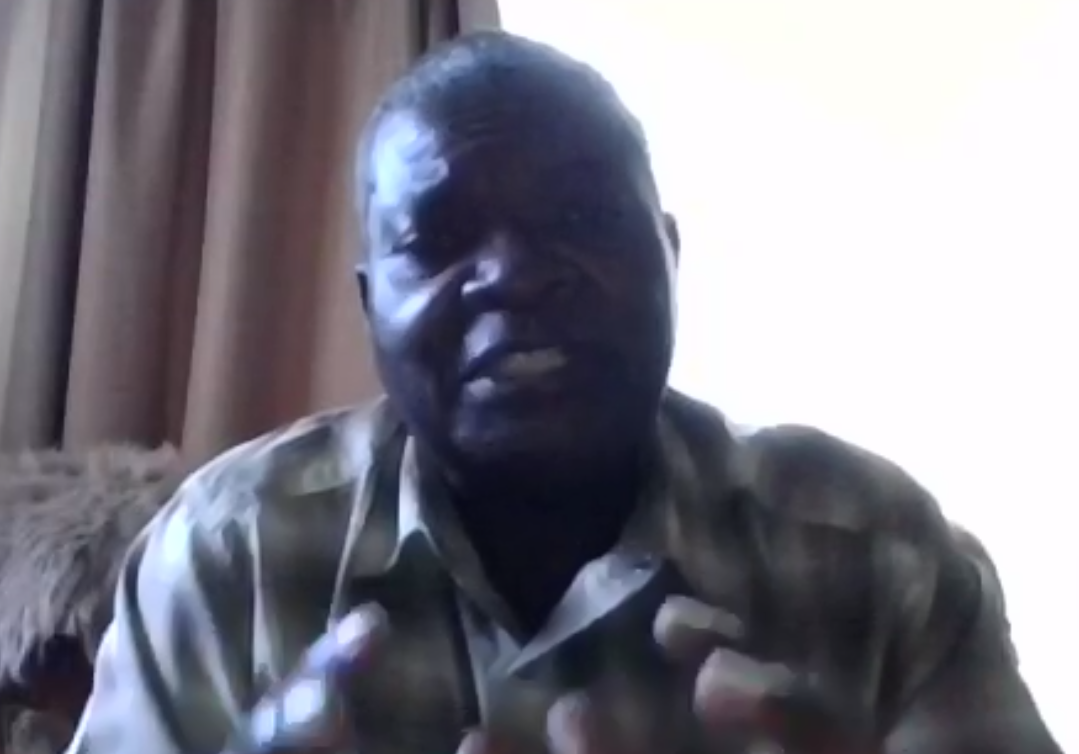
Joseph Bishi and Daud Taranhike during the online interview.
The Murambinda Community Network was launched in May last year. Do you already see its impact on people's lives?
Bishi: I believe the Murambinda Community Network launch was actually an important introduction to a new era for the country, as it presents a new real alternative to allow people to innovate and gives them an opportunity to solve their communication needs. In terms of impact on local people's lives, I can say the availability of the community network in Murambinda has actually become a life hub of the community in enabling development to spring from the network in the direction that the community wants. But I would like to actually ask Daud this question, because he is connecting right from the community network.
Taranhike: Let me just start by painting a picture of how the rural communities are in Zimbabwe. They are composed of many not well-off people. And also a lot of people, when they go to school, tend to migrate to the urban areas and move away from their rural communities, because they are looking for jobs, trying to seize opportunities to enhance their livelihoods. And as such, these communities are sort of marginalised. They're put at the back of development, whether at national level, at local level or from an infrastructure perspective. When the government tried to reach out to these communities, it came up with a concept called the Community Information Centres, hubs positioned at what we call growth points here in Zimbabwe. These are like rural, peri-urban centres that have some postal services and, with the set-up of these community information centres, internet access.
What the Murambinda Community Network has done is to take the last mile of ICT [information and communications technology] from these centres, from the growth point, to business institutions, to schools, and to households in the rural community. As I speak with you now, I'm actually at my rural home, deep down in a rural community, where there is no public network. This has been made possible by this initiative that Joseph has come up with and by this decentralised community innovation that makes it possible for us to be part of the ICT movement. Now we don't feel isolated, I can actually do what I want from the homestead. I don't have to go to the growth point or to the urban centres to access information on the internet. I can communicate with my children all over the world, at any time. We have even become part of the Zimbabwe radio station to communicate development in the rural areas. And I do that from my home.
Could you tell me a bit more about the development project for rural areas and how you are using communications in this project?
Taranhike: We were touched by the plight of the rural communities. And we wanted to bring a solution, we wanted to transform this community from a place of poverty to a place of prosperity. We wanted people to realise that they can make a living in a dry, arid area where there's very little rainfall. And as such, we realised that we need to start with a homestead and develop from the homestead so that we are then able to transform the communities into economic zones, small village zones based on a household, a home-based enterprise.
So we've managed to do that with the Integral Kumusha. An integral approach means we look at different aspects, we look at nature and the community, we look at culture and spirituality, we look at technology and science, enterprise and economics. And it was through the community network that we looked at technology and science. It comes in the form of the solar panel as a source of power. Also with the drip irrigation system that we employ because this is a dry area.
And as this project has become so successful, we've been asked to share our learnings and experience locally, regionally and internationally. That's why we actually share on radio about what the Integral Kumusha is and the concept of “Nhakanomics”, which is a term we use to say that we need an economy that is built on the indigenous African way of building legacy. Nhaka means legacy, and then we bring legacy and economics together. So, we do lectures about this at St. Gallen University in Switzerland, at Ibadan University in Nigeria, at Meridian University in the United States – all of them virtually. We have become a part of those communities that are building socioeconomic transformation, starting from the home level, the community level to national level and transforming and enhancing people's lives.
So that now we've started seeing people moving back from urban areas, coming to the rural areas. In a nutshell, this is a very big project that has caught the attention of the authorities locally and also at a [national] government level. The Ministry of ICT has also come and witnessed what we are doing at this project and they've recognised the smart integral homestead as a place where you transform lives, and that it is self-sufficient and self-sustaining. So people are now starting to contribute positively to the national economy.
Bishi: This homestead or kumusha initiative is more like a concept of smart villages, because they raise farm crops, and they are developing an app where they can sell their produce online. And that is all quite inspiring. Like I said, the availability of the community network is just allowing development to spring in the direction of what the community would want.
This bottom-up approach actually provides a very nice link to the next question. How was the first-ever National Community Network Conference in Zimbabwe? What are the main outcomes of this collaborative effort?
Bishi: The conference was actually hosted in Murambinda and included a module on the smart villages homestead, as a site visit, which led to a commitment to replicate such initiatives across the country by the Minister of ICT. It was the first of its kind.
Taranhike: Indeed, the conference was a huge success. And, when the Permanent Secretary of ICT visited the Murambinda Community Network and also visited us, they witnessed what we are doing. And they realised that the impact of the community network initiative was so huge. And all the provinces in Zimbabwe congregated at Murambinda to see for themselves, and to understand and to learn how the community network was conceived and implemented, and how it is being run. And as part of that, they also had to visit the Integral Kumusha, because this is an integral component of the community. So as a result, after the conference, all the representatives, the youth representatives from these districts, provinces, had to come up with plans on how they can implement what they have learned into their respective communities.
So the biggest achievement was that people were able to experience what they never thought could happen in a rural community. They saw that you can make a livelihood in a rural community and, at the same time, you can also implement that in their respective areas, supported by the Ministry of ICT. It was more than just a conference for learning, it became a conference for the entire community and beyond. Companies and organisations came to sponsor and support us. Even the national radio was interested to broadcast how it was going and, from then on, every week my wife and I are presenting on the radio on how to implement these initiatives on a practical basis. I believe it has become more than an initiative, but a rural development transformation movement.
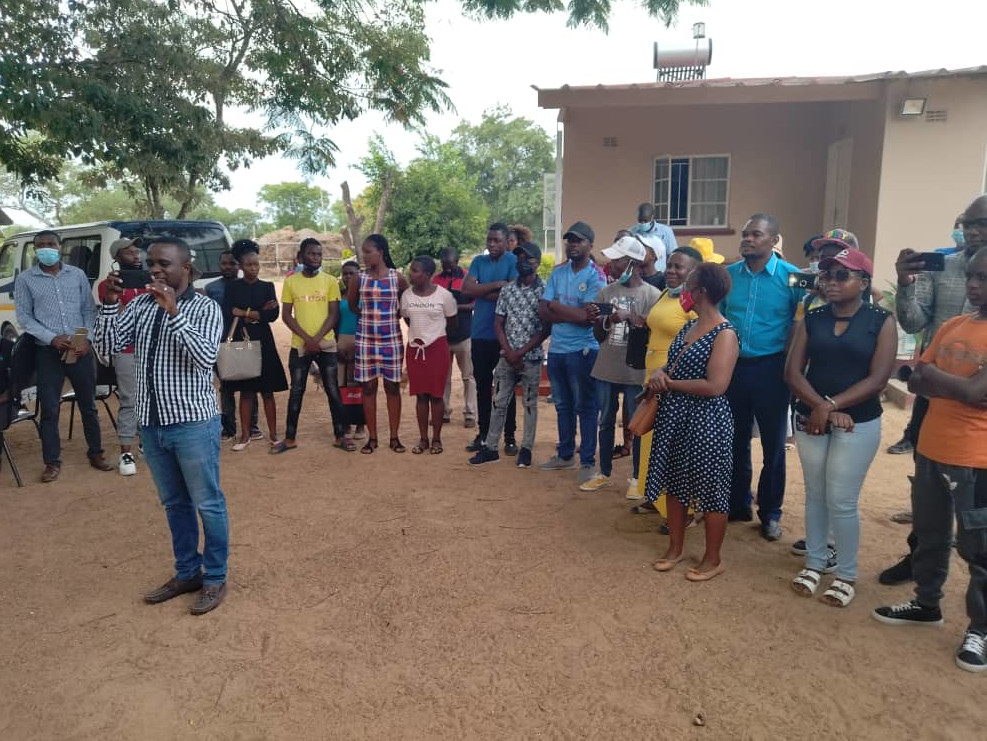
The presentation of the Integral Kumusha to participants and delegates during the Community Networks National Conference. Photo: Daud Taranhike
Could you tell me about the committees for the development of community networks in the other provinces in Zimbabwe? What are they like, who is on board?
Bishi: Actually, considering all the outcomes of the conference, we needed to come up with a committee structure. It's still a proposal, it's not yet approved, but the idea is to have a National Committee for community network initiatives. So this will be a collaborative space, and will be a collection of all the community networks across the country. It should have representatives from different areas, such as the Ministry of ICT, Courier and Postal Services, the Posts and Telecommunications Regulatory Authority (POTRAZ), some civil society organisations, small internet service providers, and communities’ representatives. And then we will have something similar all levels: a Provincial Committee, a District Committee and, finally, the Community Network Steering Committee.
So the goal is to have community networks in all the provinces in the country?
Bishi: Yes, we need to have at least one community network in each province, so it represents a model, a closer model for replication – rather than having people coming from a faraway province to Murambinda to learn. If we have a model community network in each province, it becomes a centre of excellence, where others can start, they can visit and get mentorship and guidance. So that the replication process can go faster until the digital divide is actually broken.
What kind of support do the communities need from policy makers and regulators in the country to make this crucial change happen?
Bishi: I believe we need access to more spectrum. The spectrum is not fully utilised in the country, while many people get left out. This is really important, for example, some children are deprived from certain learning privileges online if they are not given the needed services. So we are really pushing for regulators to properly come up with some policies to allow spectrum sharing, so that such innovations can grow across the country and allow small players to work towards positive change and innovations without being swallowed by the big players.
The Universal Service Fund can also support community networks to promote digital inclusion. And again, after the successful pilot of the Murambinda Community Network and the conference, the regulators see the community network being that last-mile connectivity solution, like Daud said. And they really want to support the establishment of more initiatives across the country. They have already been informally engaging, speaking to me about this possibility. So, what I can say is that, currently, the process is still in some approval stage from the authorities, but this is something they intend to do this year and we will be following it closely.
This process brought about many important achievements in the country. In terms of lessons learned that could inspire other African nations, what steps would you highlight? And is there anything you would do differently in the process?
Bishi: I believe it is so key to properly engage and get your community involved in every step. You have to hear from the roots, the rural communities. There is a saying that “It takes a village to raise a child”, which means it is everyone's responsibility to nurture, to guide a child into its maturity. So in the same way, considering a community network, you must always have the community being involved in your attempt to bring that positive change. In that way, you're ensuring that responsibilities and opportunities are literally shared. And you have the energy that you need surrounding you, that will bring some ideas and the strength that you need to lead the initiative into its sustainability and maturity stage. And another important ingredient is resilience. If I started all over, I think I would have engaged the right people in my community earlier rather than trying to move alone on some steps.
Taranhike: One of the major lessons that emerged from working with the community is that people learn and they accept something when they see it. They don't just accept concepts for the sake of it. You can go with very good intellectual concepts, but if you cannot demonstrate that this thing can be put to practical use, people don't really embrace that change. And I have seen that the community networks and the Integral Kumusha demonstrate that this concept can be put to practical use. The second lesson is the emerging concept that you can transform communities or even a nation better by starting from the ground, from the grassroots, the bottom. The top-to-bottom approach is not as effective as the bottom-up approach. I've really witnessed this.
You mentioned this collective effort and the multiple people involved it. In your experience, how was the involvement of women?
Taranhike: I'm sure you have heard when I say that my wife and I were building this initiative. In fact, my wife actually runs this community initiative. She runs the Integral Kumusha and she works with the women in the community. The women actually take centre stage, because we have realised that it is the woman in the rural areas who has the responsibility to ensure that the children are fed, that the household is sustainable, and she knows what people eat and how the children can grow up having good food, and a well-balanced diet. Women have all these responsibilities, although a number of times they are not recognised for it. Even in the conference, the composition of our participants was well balanced in terms of gender, male and female, they all participated. And there is also the youth involvement, because the youth have always been put away from these initiatives. And now we have actually seen the youth participation.
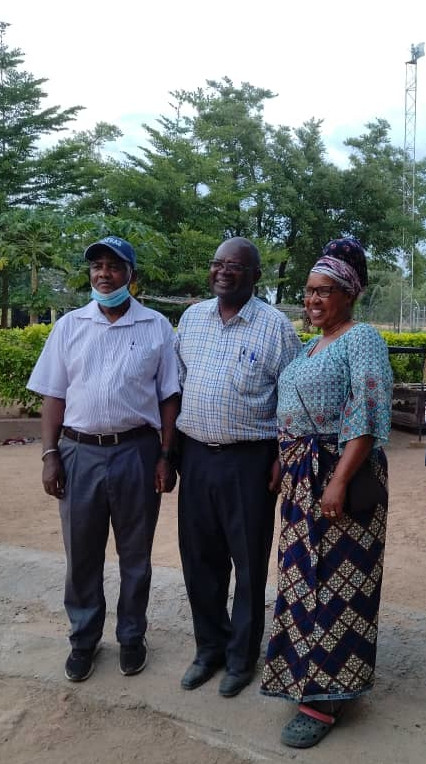
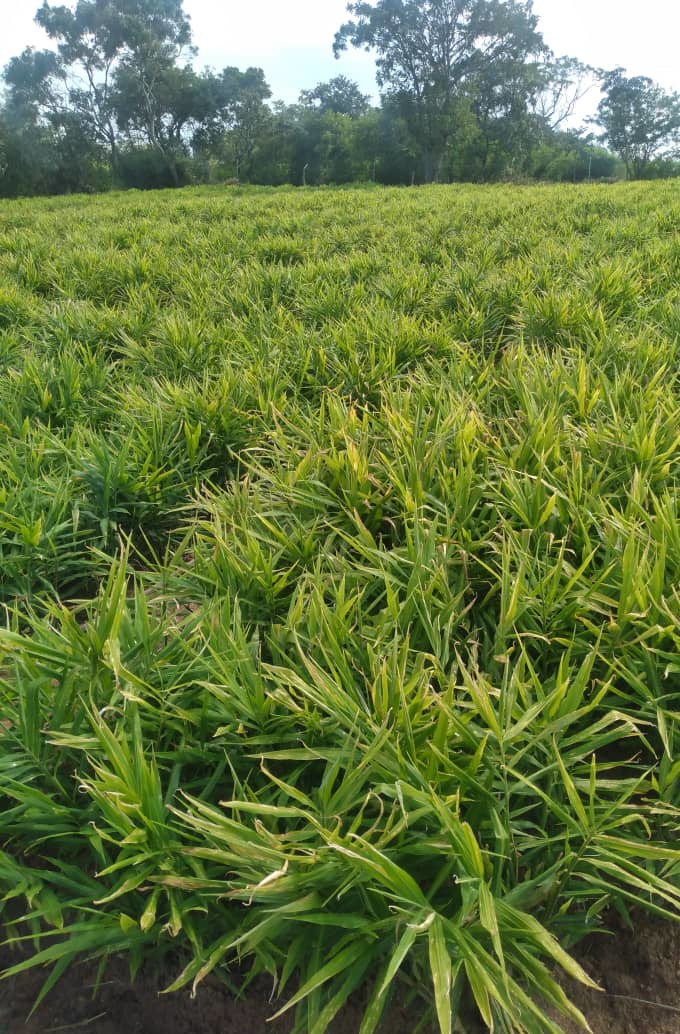
Daud and Christina Taranhike with Sam Kundishora, the Permanent Secretary in the Ministry of ICT, Courier and Postal Services (left). A ginger crop from the Integral Kumusha (right).
And now I would like to ask one final question. What are your dreams for the future?
Taranhike: Going into the future, the community networks or the small players should actually be given some sort of licence to trade, so they are not having to go under the big operators. So like Joseph, we are lobbying with the regulator towards this recognition. And from the Integral Kumusha and the community network stance going into the future, we think we need to educate and conduct a lot of research. Research locally, for us to continue to find ways of improving livelihoods. Community networks are not only about data and connectivity, they have to do with people’s lives and livelihoods. And as such, we would like to come up with new knowledge, because if we stop learning, that is the end of this initiative. So we want to continue to do research, to teach and to train and develop our communities. So that we continue to improve. As a concluding remark, I would say that with the community network and Integral Kumusha, we share a desire to see lives being transformed. We feel we’re creating a movement that will be unstoppable. We envision rural communities being transformed into strong and robust economic zones well networked, becoming the backbone of socio-economic transformation and development and thereby promoting equality, inclusivity and prosperity!
Bishi: Actually I dream for a positive change, that can accommodate more community networks in terms of regulation, which means releasing more unlicensed bands to be used for such efforts, and even innovations like spectrum sharing. I also wish to see more players funding the establishment of community networks in the country, such as the Universal Service Fund. And to see the communities themselves gathering and raising funds to start or to establish a community network. I believe no one should be left behind and, for this, we need models in place to address the cost of access, the economic challenges around infrastructures, so all people around the country see concrete opportunity in an affordable way. And if you promote the establishment of community networks, eventually you are not only consumers of resources, but you are creating resources like technologies, local content, services to sell farm products online. And this would be fulfilling and eventually would bring communities into the place of relevance where they should be.